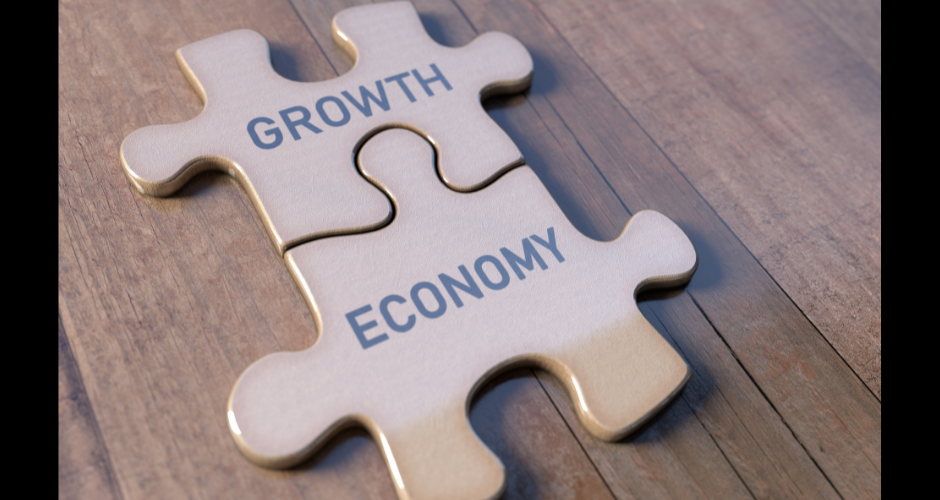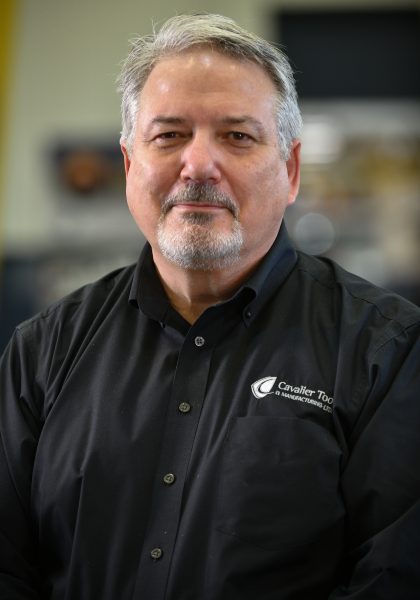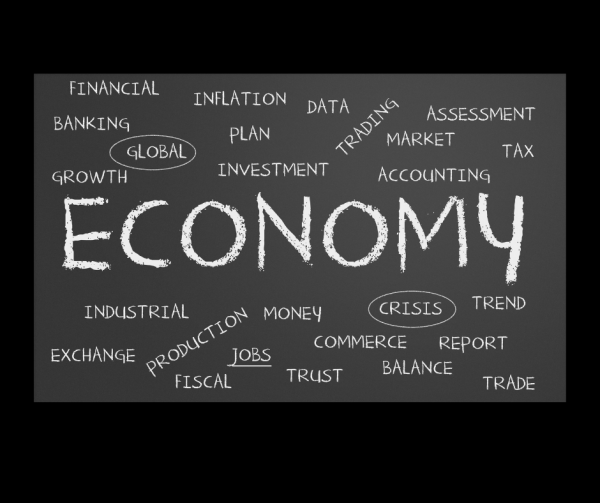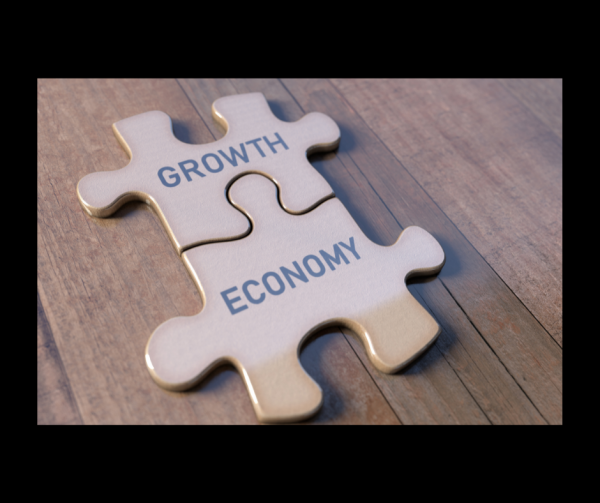
How to keep on top of economic factors in Plastic Injection Molding world
Published May 29, 2022 | Posted in Cavalier, Industry
Cavalier Tool and Manufacturing knows it is vital to understand the economy – especially as the people who make things that make things in the world of plastic injection molding.
Supply chain. Exchange rate. Inflation. Supply/Demand. Elections. All things that impact how we do business.
Tim Galbraith, recently-appointed General Manager of Cavalier Tool and Manufacturing, keeps up on the current status of market news and trends. This helps him stay ahead of what is coming at them as mold makers.
“We traditionally look to historical economic models to see what the countermeasures were, what worked and what did not. The current headwinds, while maybe not unprecedented, are surrounded with circumstances we have never seen before.
Global interconnectivity of markets driven by the sentiment of globalism is hitting a wall as many countries are becoming nationalistic,” says Galbraith.
“The current war in Ukraine is one example. Global expansion over the last few decades now allows countries to wage economic war without joining the conflict directly. The global ramifications of that single event are unprecedented. WTI (West Texas Intermediate) alone has gone from $63 to $124 in nine months,” he says.
Inflation, unemployment, interest rates; these are all things we can look at historically, but today’s circumstances present an entirely different lens to look through. A lens used by Galbraith and Cavalier to help chart their course.
“It is tough to plan when economic developments are reacting to influences we have not seen before, so you adjust your sails!”, says Galbraith. “Keeping up on economic trends is part of our planning process as sticking our head in the sand isn’t an option.”
The economic climate has a big impact on manufacturing and plastics, which of late is also tied into supply chain issues – what Galbraith calls “supply chain disruptors”.
“It’s hard for us to get some of the things that we used to get: aluminum for our tools as an example. We had a wide variety of grades or alloys available to us in the past. Now decisions are being made based on what’s available …Steel has gone up in price, almost doubled in the last year and it’s a significant cost factor in the product that we put out the door and in fact, it is a disruptor in our industry as a whole.
Now, disclaimers in quotations are required for pricing due to geopolitical upheavals. This is an industry-wide problem, but at Cavalier we work to stay ahead of them and provide a range of solutions, rather than just hand-wringing,” says Galbraith.
Cavalier says issues in the industry are unparalleled. “For our customers that means there needs to be flexibility to change their cost model because the pipeline for us is so large, sometimes as long as a year from quote to order realization. There are so many factors that have caused the prices to change, that it’s a whole new ball game. It’s very, very difficult to navigate these waters.”, Galbraith said.
SUPPLY CHAIN 101:
A supply chain is basically about connecting the various components of manufacturing; such as suppliers, manufacturers, distributors, consumers with help from technologies like automation, ERP software and business operation tools.
According to Business Insider, the supply chain is the process of creating and delivering an item. It consists of all the steps and processes, including logistics, required to transport these products or services from the place where it’s created, to the consumer who utilizes it. Each step presents challenges that can either result in delays and empty shelves or the simple quiet success of a well-stocked store awaiting consumers.
The supply chain works in 5 steps. This list references mass- produced products so some further detail is provided more relevant to our industry and even specific to Cavalier:
- Planning: This is where the manufacturer decides how many items to produce based on estimates of demand versus available supply, along with other economic factors including popularity of the product, consumer spending, employment, and so forth.
- Cavalier, as a discreet manufacturer, plans by studying markets and expected demand in those markets to focus efforts in developing opportunities.
- Sourcing: This step involves gathering raw materials or components needed to manufacture the products that will eventually be offered for sale. These materials must be collected, transported, and stored until used in the manufacturing process.
- Manufacturing: Manufacturing or making the product from sourced materials also involves several other embedded processes including quality control, testing, and packaging.
- Delivery: During this step, finished products go to a distribution center for delivery to retailers and ultimately the customer. This process can include the so-called last mile, a name used to describe the final delivery leg that moves the product from the retailer to the customer’s doorstep.
- Discreet manufacturing of capital goods, our products are delivered direct to the end user. Distribution is not part of our process.
- Return: Also known as reverse logistics, the return process may be activated at the consumer level (returning a defective product) all the way down to the sourcing level (returning defective or excess raw materials to vendors).
Galbraith says a big part of his life when not managing day-to-day business and tending to supply chain issues, is following economic trends.
“Right now this is my life, following Bloomberg and Wall Street Journal, and Financial Times. And all I’m doing is trying to project for Cavalier what Q2, Q3 and Q4 this year will look like and maybe a little bit of next year, as well. I got to tell you, it is upside down.”
He believes it is important to be proactive, not reactive when it comes to the #CavalierArmy. Planning for the future is paramount, even if plans may change quickly and often.
Cavalier is also a member of the Canadian Association of Moldmakers (CAMM) – an organization also advocating to ensure our industry keeps in step with global changes.
“I think you want to be able to see over the horizon, not deal with what comes when it comes. It’s a whole lot easier to deal with, if you spot it.”
Claudia Sahm, a Macroeconomic Policy Consultant and founder of Stay-at-Home Macro (SAHM) Consulting is on Tim’s list of people to follow. She is a regular opinion-writer at Bloomberg and The New York Times. She has policy and research expertise on consumer spending, fiscal stimulus, and the financial well-being of households. She is the author of the “Sahm Rule,” a reliable early signal of recessions that she developed as a way to automatically trigger stimulus payments to individuals in a recession.
Tim says Sahm’s writing can be more easily understood by everyone. “She writes a substack piece regularly and she actually invented an indicator in 2019 that is dead accurate, going back to the turn of the century of 1900.
She also just wrote a piece that said that her model may not hold true during a pandemic and gave all the variable factors!
In macroeconomics, the Sahm Rule, or Sahm Rule Recession Indicator, is a heuristic for determining when an economy has entered a recession. It is useful in real-time evaluation of the business cycle and relies on monthly unemployment data from the BLS (Bureau of Labor Statistics). It is named eponymously after former Federal Reserve and Council of Economic Advisors economist, Claudia Sahm.
Since the Industrial Revolution, the way we produce and consume goods has changed. So, it is key to any company’s growth to keep a handle on changes.
It is innovation that allows nations to become increasingly more productive. It is also innovation that allows Cavalier to provide options and solutions.
“This is where focusing on quality and speed to market, not just price, sets us apart,” says Galbriath. “With a new set of circumstances, we also need to keep our focus. I’ll start with an example; I bought a steak at the butcher last week that cost me $30 (that’s just a plain single raw steak). Two years ago, I paid less than $15 for that same steak. Price is a concern, but I wanted a nice steak.
“We’re also seeing that right now in the industry. There are people who are saying with the uncertainty around transportation from offshore and / or the uncertainties with the supply chain, they are willing to pay more to make sure that their product can be on the shelves at the big box store on time. They don’t want to be delayed because tooling got stuck on a ship in San Diego or Long Beach, or can’t get out of Shanghai and therefore was not delivered on time for them to manufacture products to get to their customers. Some customers will pay more for that, and also to ensure they get the quality guarantee from Cavalier.”
Galbraith says another factor that has come into play are the elections.
“As we know, politicians exist to be reelected,” says Galbraith. “ I don’t want that to sound cynical, but it’s a fact. We’re seeing some things that may influence our industry. Rumblings out of the US, for example; they’re talking about rescinding the “Trump tariffs”, that imposed a 25% tariff on thousands of products brought in from China.
That is a quick way to combat inflation because our North American appetite for low cost Chinese imports is pretty mature. And by dropping those prices by a significant amount of money, that will effectively allow the cost of living to go down for some people and that’s a good thing in an election year.”
However, that brings about another problem!
“It’s counterproductive to what’s been going on in the last few years pertaining to reshoring. It is going to throw a monkey wrench into the economy because people who built their business on supplying competitive products in North America, from North America, will now be stuck with or faced with a new set of headwinds where it’s cheaper to get it from China again.”
Now we are looking at people’s appetite for price overriding their appetite for nationalism.
Rough waters indeed!
If we look at Canada, we know Canadian manufacturing is vital to the Canadian economy.
According to Canadian Manufacturers and Exporters, Canada’s manufacturers account for 10% of all economic activity, nearly 10% of all jobs, and 65% of exports. The sector makes world-class products in Canada; all built by over 1.7 million Canadians.
In a recent LinkedIn post by Jeff Winter, an Industry 4.0 & Digital Transformation Enthusiast and Business Strategist, he wrote: “Change is a constant in business, and the companies that have outperformed their competitors over the years, have steadily kept pace with changes in the economic landscape, technology innovation, and the latest business practices.”
All to say this: the waters are rocky and the industry has challenges, but at Cavalier, the focus is on a solutions-centered approach.
The Cavalier Way: People. Process. Equipment.



